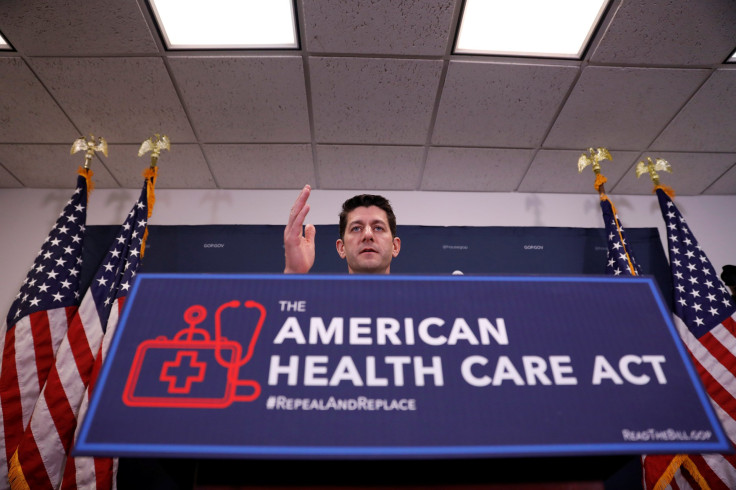Women And Health Care: Study Reveals Gender Split In Ability To Afford Coverage

The American Health Care Act—alternatively known as “Trumpcare,” “Ryancare” and “Obamacare Lite”—stands to hurt many low-income Americans who receive lower subsidies, by raising their premiums by between 15 and 20 percent over the next couple of years and denying Medicaid coverage beyond a specified individual funding cap. But the AHCA would also hurt women, and not just because it defunds the nationwide women’s health and family planning service Planned Parenthood.
Women are far more vulnerable to gaps in healthcare coverage, according to a study released Tuesday by the healthcare information and research site Amino along with the market research company Ipsos.
Read: Where Will Healthcare Cost The Most? 'Trumpcare' Will Be Most Expensive In These Cities, Study Says
A full 62 percent of female respondents to the firms’ survey said they’d received a medical bill they did not have the money to cover, compared to 47 percent of men, and 44 percent said they’d go into debt in the event that they would face an unforeseen medical bill of at least $100, compared to 27 percent of male respondents. About one in six female survey participants said they had enough of a financial cushion to handle a $2,000 medical payment, compared to nearly twice as many men.
The study, which surveyed about 1,000 American adults and carried a margin of error of 3.5 percentage points, aligned with much research highlighting America’s healthcare coverage gender split.
For example, a 2013 study from the Kaiser Family Foundation, a healthcare policy nonprofit, found that more than one in four women needed to delay or simply avoid medical care over the course of a year because they couldn’t afford it, compared to one in five men. And of the country’s sickest adults, nearly two-thirds were female, according to the Commonwealth Fund, a private healthcare policy foundation, which pointed to women’s tendency to live longer than men.
Trumpcare upholds Obamacare’s ban on gender-based price discrimination among healthcare providers. But for lower-income women, the 2017 law’s termination of funding for Planned Parenthood—which served 2.5 million patients in 2015, three quarters of whom were at or below 150 percent of the federal poverty level of $11,770 for individuals and $16,243 for families—getting preventative and Ob-gyn care will likely be much harder on their wallets.
Read: Why Is Healthcare So Expensive? Administrative Costs, High Drug Prices, Doctors' Fees Hurt Patients
© Copyright IBTimes 2025. All rights reserved.






















